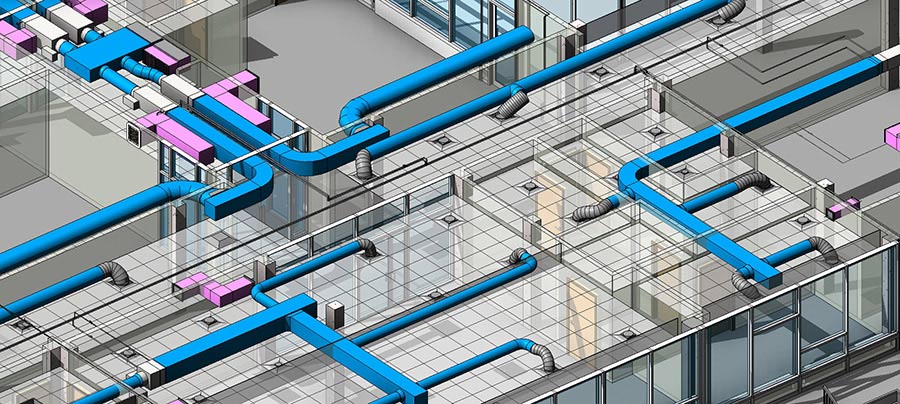Water conservation is becoming an increasingly important issue worldwide, especially in commercial buildings that consume large quantities of water daily.

In the intricate realm of building design and construction, the harmony between diverse systems and elements is pivotal to the success of a project. The perfect symbiosis of architectural aesthetics and the functionality of Mechanical, Electrical, and Plumbing (MEP) systems can be a complex endeavor, necessitating meticulous planning, open communication, and seamless collaboration. At the heart of this coordination process lies an invaluable tool – the Reflected Ceiling Plan (RCP). In this blog post, we will explore the critical role of RCPs in MEP coordination and how they empower MEP engineers to craft efficient, integrated, and compliant building systems.
Unraveling the Complexity of MEP Coordination
MEP coordination is the intricate process of harmonizing the mechanical, electrical, and plumbing systems within a building with the architectural and structural elements. It is a multifaceted endeavor that encompasses an array of complex tasks, including the positioning of mechanical equipment, electrical conduits, plumbing fixtures, lighting fixtures, and much more. The goal of MEP coordination is to create a seamless, efficient, and compliant network of systems that supports the functionality and comfort of the building’s occupants.
The Crucial Role of Reflected Ceiling Plans
Within the realm of MEP coordination, Reflected Ceiling Plans (RCPs) emerge as a foundational element. RCPs are comprehensive architectural drawings that provide a top-down view of the ceiling layout in a building. They detail the placement of fixtures attached to the ceiling, including lighting fixtures, HVAC vents, sprinklers, smoke detectors, and other components that are critical to the overall functionality of a space.
1. Visualizing Spatial Relationships:
One of the most profound advantages of RCPs is their ability to help MEP engineers visualize the spatial relationships between their systems and the ceiling elements. This visual clarity enables engineers to comprehend how various systems, fixtures, and architectural elements interrelate within the spatial dimensions of a room or space.
2. Detecting Issues and Conflicts:
RCPs act as a proactive tool for identifying potential issues and conflicts early in the design phase. With the ability to see how systems interact with the ceiling, MEP engineers can spot clashes and inconsistencies before they become costly problems during construction.
3. Proposing Solutions and Alternatives:
In situations where conflicts or issues arise, RCPs provide the foundation for proposing solutions and alternatives. By assessing the space and the layout of fixtures, MEP engineers can devise creative solutions that ensure all components work cohesively within the design.
4. Documenting Design Decisions:
In the context of MEP coordination, proper documentation is crucial. RCPs serve as an enduring record of design decisions and system layouts. This documentation ensures that the collaborative efforts of architects, engineers, and other stakeholders are preserved throughout the project’s lifecycle.
InnoDez Engineering stands at the forefront of the industry, understanding the pivotal role that RCPs play in facilitating MEP coordination. Our MEP engineers harness the power of RCPs to seamlessly integrate mechanical, electrical, and plumbing systems into the architectural vision. The result is a coordinated, efficient, and harmonious building that meets the highest standards of quality.
Reflected Ceiling Plans are the unsung heroes of MEP coordination. They are the bridge between architectural vision and engineering reality, providing the clarity and insight required for harmonious system integration. As InnoDez Engineering continues to pioneer excellence in MEP coordination, RCPs remain an essential tool in our commitment to crafting spaces that are efficient, integrated, and compliant with industry standards.
About Author
InnoDez